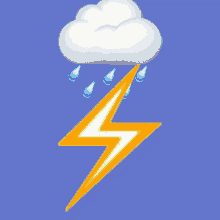THUNDERSTORM ASTHMA 
Thunderstorm asthma is a rare but potentially life-threatening phenomenon that occurs when certain weather conditions combine with high levels of allergens to trigger severe asthma symptoms in susceptible individuals.
Here’s how thunderstorm asthma typically occurs:
Weather Conditions: Thunderstorm asthma events are more likely to happen on hot, windy days before a thunderstorm. These conditions can cause grass pollen grains to rupture and release tiny, allergenic particles into the air.
Pollen Allergens: Grass pollen is one of the primary triggers for thunderstorm asthma. Grasses like rye grass are particularly associated with these events.
Airborne Allergen Exposure: During the thunderstorm, the wind can carry the small pollen particles over large distances. People who are allergic to these pollen types may inhale the particles, causing allergic reactions.
Asthma Attacks: People who are susceptible to pollen allergies, particularly those with asthma, can experience sudden and severe asthma attacks. The inhaled allergenic particles can trigger bronchospasms, coughing and difficulty breathing.
The symptoms of thunderstorm asthma can be severe and affected individuals may require urgent medical attention. This phenomenon can overwhelm healthcare systems with a sudden surge of patients seeking treatment.
Preventive measures for individuals who are prone to thunderstorm asthma include staying indoors during thunderstorms, keeping windows closed, using air purifiers and taking prescribed asthma medications as directed by a healthcare professional. It’s important for those with asthma or known pollen allergies to be aware of the weather conditions and take precautions on high-risk days.
Health authorities and meteorological services in regions prone to thunderstorm asthma events often issue warnings to the public to help reduce the risk and manage potential outbreaks.
Please speak to your GP if you require more information on preventative measures.




